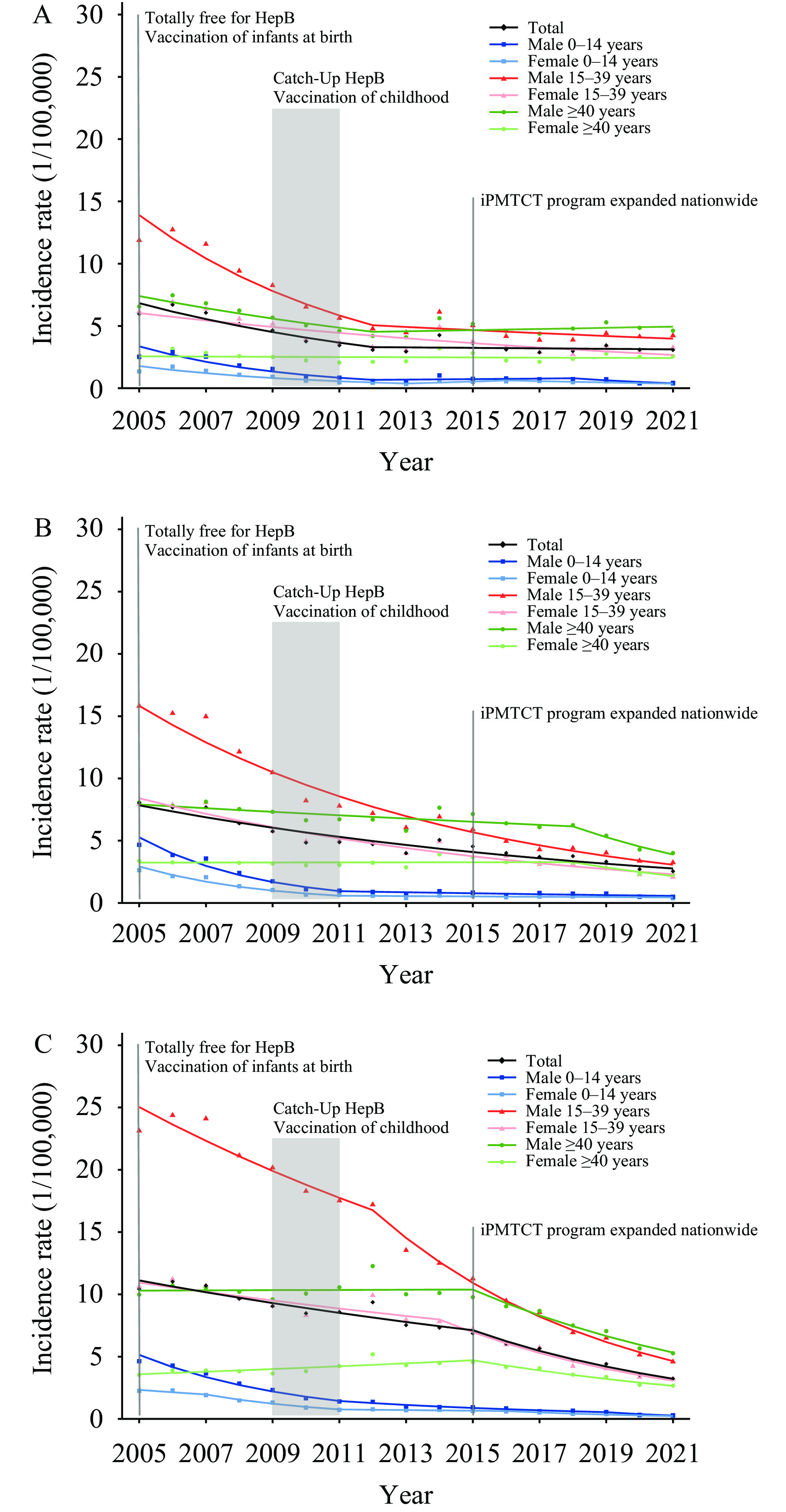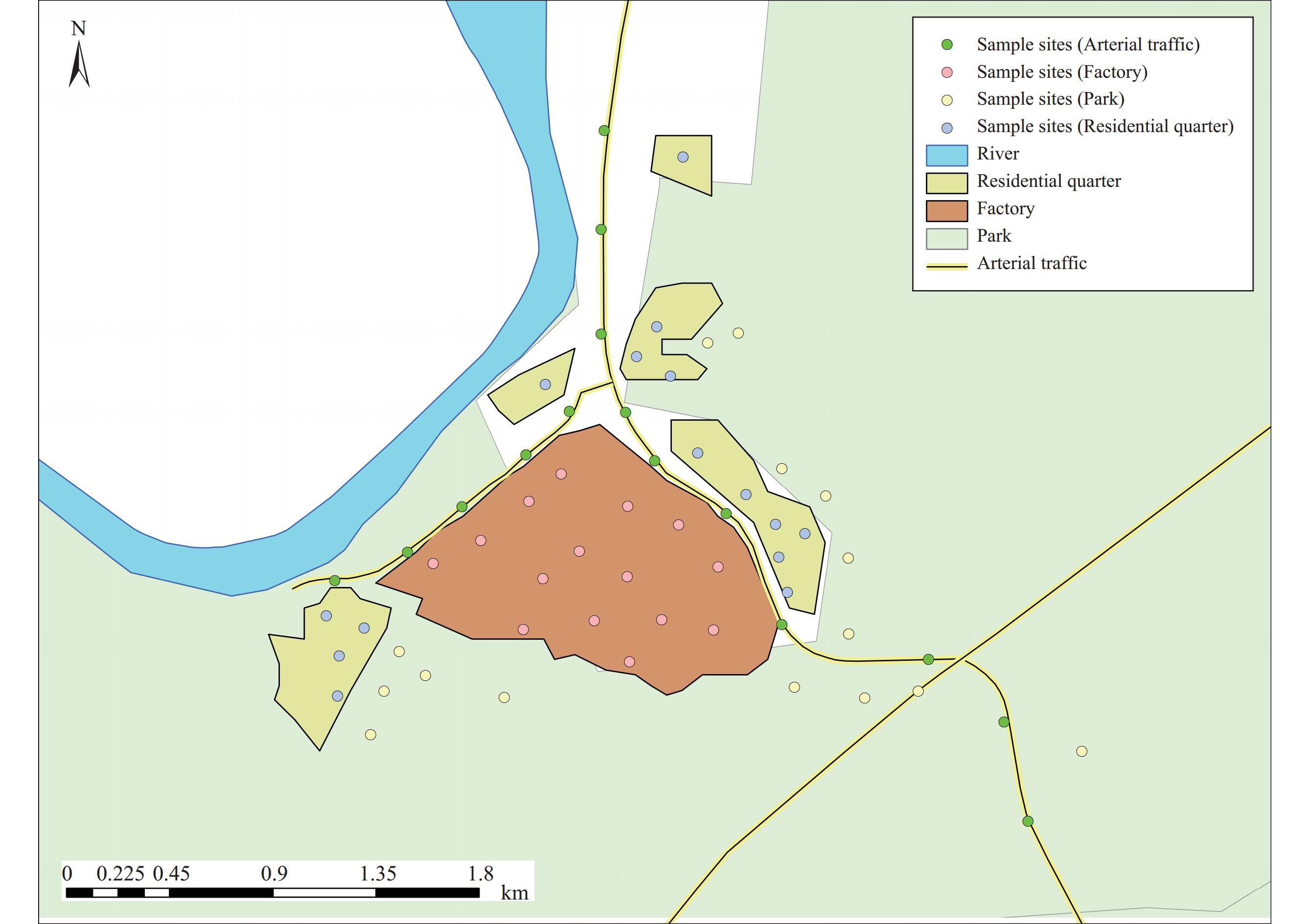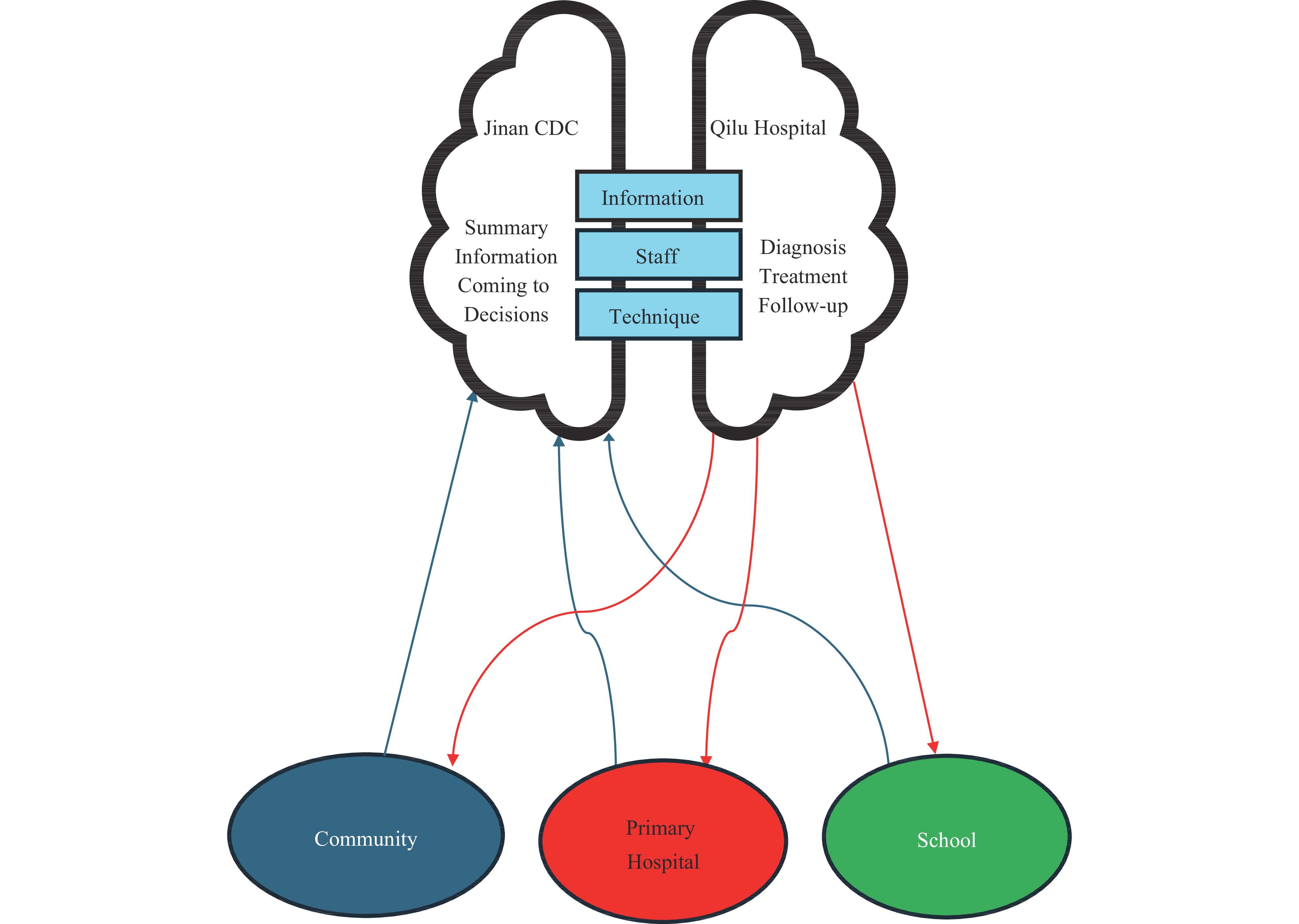2024 Vol. 6, No. 30
This study analyzed long-term trends in the incidence of acute hepatitis B (AHB) in China, focusing on age, period, and cohort effects on incidence.
Data on AHB from 2005 to 2021 were extracted from the National Notifiable Disease Reporting System (NNDRS) of China for analysis. Incidences of AHB were calculated by gender and age group using population denominators from the 2000, 2010, and 2020 censuses. Joinpoint regression was employed to evaluate trends, and an age-period-cohort model was used to assess the age, period, and cohort effects.
The annual average incidence of reported AHB in children aged 14 years and below in low, intermediate, and high endemic areas decreased from 1.65, 2.33, and 2.56 per 100,000 in 2005–2010 to 0.56, 0.58, and 0.48 per 100,000 in the 2016–2021 period. The 15–39-year age group in high endemic areas exhibited the most significant decline in incidence, dropping from 23.14 per 100,000 in 2005 to 4.59 per 100,000 in 2021 among males and from 10.62 per 100,000 to 3.21 per 100,000 among females. Age-period-cohort analysis indicated decreasing age, period, and cohort effects for reported AHB incidence in each endemic area, except for a slight upward trend in the 15–19-year age group and in the cohort born between 1951 and 1955.
This study demonstrated a rapid decline in AHB incidence across various endemic areas since 2005. Children aged 14 years and below exhibited very low AHB incidences, while the incidence among individuals over 15 years was higher. To further reduce AHB incidence, hepatitis B vaccine (HepB) coverage should be enhanced among adolescents and adults.
Rickettsial and Rickettsial-like diseases, resulting from obligate intracellular Gram-negative bacteria, pose a growing public health threat in China. To assess the current prevalence of these diseases on Hainan Island, a study was conducted on 9 bacterial pathogens found in patients with undifferentiated febrile illness (UFI) treated in Haikou between 2018 and 2021 using a TaqMan Polymerase Chain Reaction (TaqMan PCR) array.
Blood samples (n=503) were collected from patients with UFI between 2018 and 2021. The samples were screened for Rickettsia spp., Orientia tsutsugamushi (O. tsutsugamushi), Anaplasma. phagocytophilum (A. phagocytophilum), Ehrlichia chaffeensis, Coxiella burnetii, Chlamydia psittaci, Brucella spp., Burkholderia pseudomallei, and Borrelia burgdorferi using a TaqMan PCR array. Positive samples (Ct<35) underwent confirmation through nested PCR, sequencing, and phylogenetic analysis.
O. tsutsugamushi and A. phagocytophilum were detected in the patients at positive rates of 14.51% (73/503) and 5.57% (28/503), respectively. Co-infection of O. tsutsugamushi and A. phagocytophilum was identified in scrub typhus (ST) positive populations from Hainan (10.96%, 8/73), Guangxi (61.54%, 8/13), and Yunnan (5.36%, 3/56) provincial-level administrative divisions (PLADs) of China.
An increased prevalence rate of ST and a decreased prevalence of rickettsioses were observed in patients with UFI in Hainan compared to a decade ago. The co-infection of O. tsutsugamushi and A. phagocytophilum poses a current public health threat in China.
This article offers a thorough review of current early warning systems (EWS) and advocates for establishing a unified research network for EWS in infectious diseases between China and Australia. We propose that future research should focus on improving infectious disease surveillance by integrating data from both countries to enhance predictive models and intervention strategies. The article highlights the need for standardized data formats and terminologies, improved surveillance capabilities, and the development of robust spatiotemporal predictive models. It concludes by examining the potential benefits and challenges of this collaborative approach and its implications for global infectious disease surveillance. This is particularly relevant to the ongoing project, early warning systems for Infectious Diseases between China and Australia (NetEWAC), which aims to use seasonal influenza as a case study to analyze influenza trends, peak activities, and potential inter-hemispheric transmission patterns. The project seeks to integrate data from both hemispheres to improve outbreak predictions and develop a spatiotemporal predictive modeling system for seasonal influenza transmission based on socio-environmental factors.
This study introduces a novel method for developing an advanced exposure conceptual model tailored for health risk assessment, focusing on microenvironments.
The research was conducted at a major smelter in China to assess the health risks associated with trace metals (TMs) pollutants in the facility and the surrounding soil.
Deterministic risk assessment indicated that cobalt, cadmium, antimony, manganese, arsenic, plumbum, and mercury (Co, Cd, Sb, Mn, As, Pb, and Hg) necessitated further evaluation through probabilistic risk assessment to assess potential health risks to residents. The 95% quantile concentrations of other TMs were found to be within acceptable health risk limits. For the probabilistic risk assessment, exposure parameters such as body weight, respiration rate, and exposure duration were collected using a questionnaire. This targeted assessment of the residential microenvironment revealed it as the site of the highest carcinogenic (CR) and non-carcinogenic risks (NCR), with values ranging from 2.84×10-5 to 6.7×10-5 and 1.59 to 5.57, respectively.
The primary contaminants posing the greatest health risks in residential and industrial areas have been identified as As, Pb, and Mn. The probabilistic health risk model, which focuses on microenvironmental factors, yields more precise results and offers a valuable tool for managing soil health risks.
Brucellosis of the central nervous system (CNS) is rare and frequently fatal, often being overlooked or misdiagnosed.
In April 2023, the Jinan CDC identified a case of CNS brucellosis in a 54-year-old woman through cerebrospinal fluid (CSF) culture. Upon confirming the diagnosis of brucellosis, the Jinan CDC immediately informed Qilu Hospital of Shandong University, to which the patient had been transferred, and she was subsequently tracked and successfully treated.
The successful outcome can be attributed to the effective integration of a system that facilitated coordinated and collaborative actions between public health services and clinical institutions.



 Subscribe for E-mail Alerts
Subscribe for E-mail Alerts CCDC Weekly RSS Feed
CCDC Weekly RSS Feed



